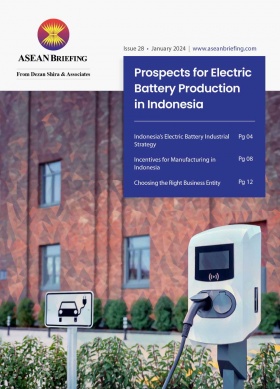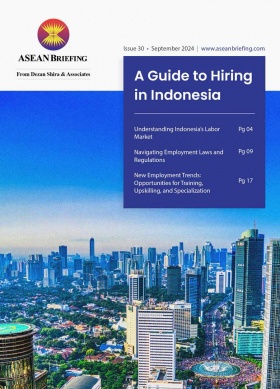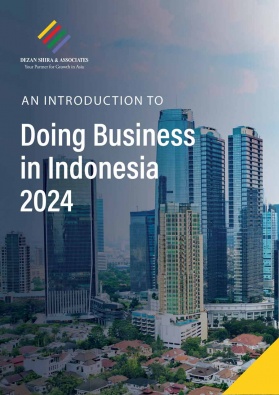India-Indonesia Bilateral Trade Trends
Indonesia has become India’s largest trading partner in the ASEAN region. Bilateral trade between the two countries increased from US$26.04 billion in 2022 to US$38.84 billion in 2023, a significant 48 percent growth. The two nations aim to reach US$50 billion in trade by 2025.
Trends in India-Indonesia bilateral trade
In 2022, India exported US$9.73 billion worth of goods to Indonesia, India’s exports to Indonesia have grown at an annual rate of 19.2 percent over the past five years, rising from US$4.05 billion in 2017 to US$9.73 billion in 2022. Meanwhile, Indonesia exported US$25.3 billion to India in 2022, Indonesia’s exports to India have increased at an annual rate of 11 percent over the past five years, from US$15 billion in 2017 to US$25.3 billion in 2022.
In June 2024, India experienced a negative trade balance with Indonesia, exporting US$462 million while importing US$2.17 billion, resulting in a trade deficit of US$1.71 billion. Compared to June 2023, India’s exports to Indonesia decreased by 20.6 percent (from US$582 million to US$462 million), while imports from Indonesia increased by 23.2 percent (from US$1.77 billion to US$2.17 billion).
|
Top 5 India Exports to Indonesia |
|
|
Items |
Value (US$) |
|
Mineral fuels, oils, distillation products |
1.91 billion |
|
Vehicles other than railways, tramways |
769.86 million |
|
Ships, boats, and other floating structures |
612.56 million |
|
Machinery, nuclear reactors, boilers |
512.48 million |
|
Organic chemicals |
330.74 million |
Source: Trading Economics
In 2022, the Reserve Bank of India (RBI) and Bank Indonesia (BI) signed a memorandum of understanding (MoU) to enhance cooperation. In 2023, a new trade channel was launched to enhance bilateral cooperation and address global issues, with a focus on investment, financial services, and infrastructure development. The launch of the India-Indonesia Economic and Financial Dialogue (EFD) in July 2023 aims to foster collaboration, enhance policy coordination, and strengthen bilateral ties.
|
Top 5 India Exports to Indonesia |
|
|
Items |
Value (US$) |
|
Mineral fuels, oils, distillation products |
9.79 billion |
|
Animal, and vegetable fats and oils, cleavage products |
4.93 billion |
|
Iron and steel |
1.80 billion |
|
Ores slag and ash |
1.01 billion |
|
Miscellaneous chemical products |
577.78 million |
DTAA
In 2016, the Indian government notified the implementation of the Double Taxation Avoidance Agreement (DTAA) between India and Indonesia.
Signed on July 27, 2012, the agreement aims to prevent fiscal evasion concerning income taxes and promote economic cooperation between the two countries. It entered into force on February 5, 2016.
The DTAA ensures that residents of either country are taxed fairly, preventing double taxation on income and fostering transparency. The agreement covers taxes on income, immovable property, and business profits, among others. Additionally, it sets provisions for permanent establishments, dividends, royalties, and interest.
Key provisions include:
- Taxation of dividends, Interest, Royalties, and Capital Gains: Income from dividends, interest, royalties, technical fees, and capital gains may be taxed in the country where the income arises or the resident state of the recipient.
- Specific categories: Special provisions are made for income earned by artists, teachers, sportspersons, students, and apprentices.
- Elimination of double taxation: One state allows deductions for taxes paid in the other state to avoid double taxation.
- Sovereign application: Both countries retain the right to apply their domestic tax laws to prevent evasion.
It also emphasizes mutual agreement procedures and the exchange of information for tax purposes, ensuring enforcement and collection assistance. Special provisions are made for individuals like teachers, researchers, students, and government employees, offering tax exemptions in specific cases. The agreement remains in force until terminated by either country.
Way forward
India and Indonesia share a long-standing relationship, strengthened by deep cultural, historical, and economic ties. In recent years, bilateral trade between the two countries has grown significantly, making Indonesia India’s largest trading partner in the ASEAN region.
To sustain and enhance the bilateral trade relationship, India and Indonesia need to focus on the following:
- Both countries need to work on diversifying their export baskets, expanding beyond traditional sectors like petroleum, palm oil, and coal, and tapping into new areas such as technology, pharmaceuticals, and manufacturing.
- India can explore opportunities to boost its services exports to Indonesia, particularly in IT, healthcare, and education sectors, which remain underexploited.
- Addressing trade imbalances: India and Indonesia should engage in dialogues to address the trade imbalances. For one, increasing foreign direct investment (FDI) from both sides, particularly in infrastructure, digital technology, and green energy, would benefit both economies. The ongoing EFD could help identify new avenues for cooperation.
By building on existing agreements, fostering cooperation, and addressing trade challenges, India and Indonesia can steadily strengthen their economic partnership, contributing to regional stability and prosperity.
About Us
ASEAN Briefing is one of five regional publications under the Asia Briefing brand. It is supported by Dezan Shira & Associates, a pan-Asia, multi-disciplinary professional services firm that assists foreign investors throughout Asia, including through offices in Jakarta, Indonesia; Singapore; Hanoi, Ho Chi Minh City, and Da Nang in Vietnam; besides our practices in China, Hong Kong SAR, India, Italy, Germany, and USA. We also have partner firms in Malaysia, Bangladesh, the Philippines, Thailand, and Australia.
Please contact us at asean@dezshira.com or visit our website at www.dezshira.com and for a complimentary subscription to ASEAN Briefing’s content products, please click here.
- Previous Article Südostasien-Produktions-Tracker: Wichtige Trends im Fokus
- Next Article India-Malaysia Bilateral Trade Relations






